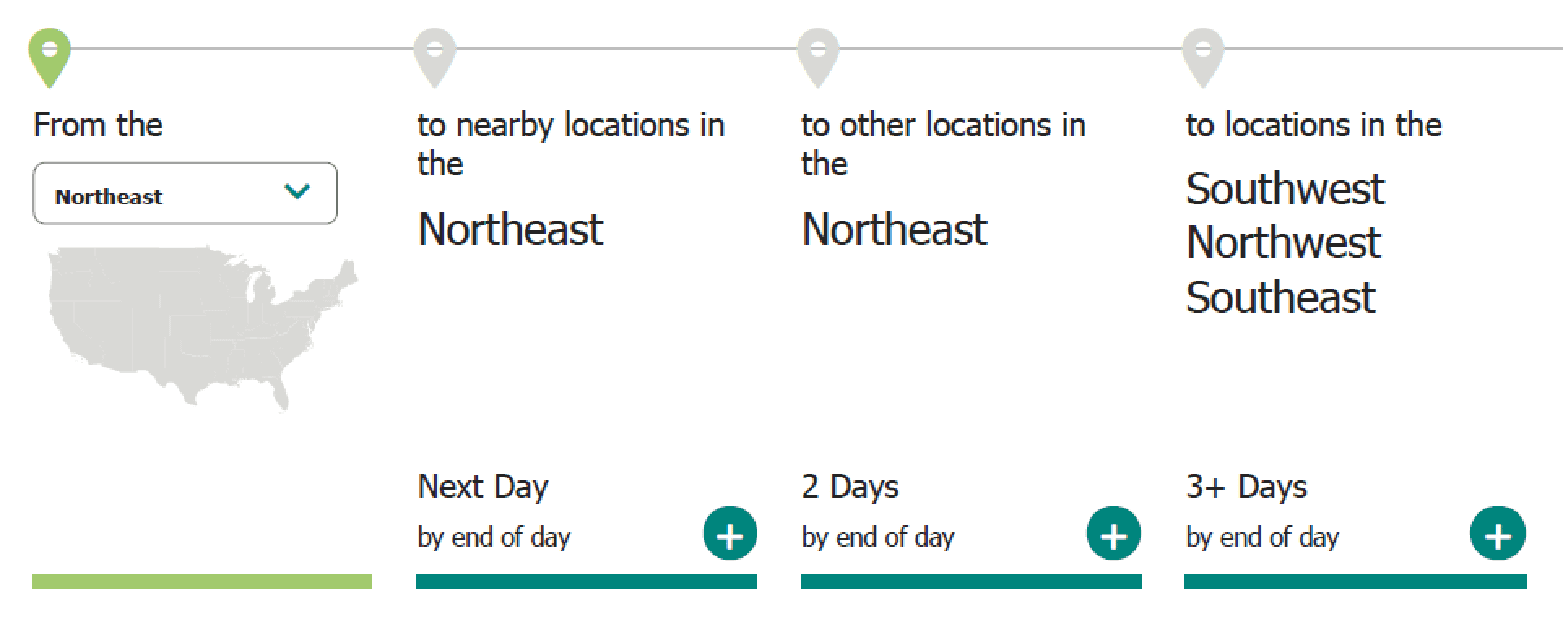So far in our series on How to Rock Your Online Store’s First Holiday Season, we’ve focused on tasks that might make you feel like one of Santa’s elves.
That’s because we’ve been creating cool things for your customers, like holiday promotions, holiday marketing campaigns, gift offers and more. All of this planning can help you bring more customers to your store and get them to buy, so your store can have a great first holiday season.
Now, it’s time to get out of the elf mindset and into reindeer mode, because once your customers buy from you, you’ve got to make sure their stuff arrives on time. And while you won’t have to entrust your fulfillment to team of flying caribou, holiday logistics can be tricky.
Get them right and you’ll delight your customers and keep them coming back. Get it wrong and you’ll be on your customers’ naughty list.
Figure out your holiday shipping game plan now
New eCommerce store owners are sometimes tripped up by shipping at the holidays, even if they’ve been handling it great until then. Why? Shipping is different during the November-December holiday rush. Here’s what you need to know to be ready and keep your customers happy.
Delivery can take longer
Shipping delays make headlines every holiday season—so much that it would be more newsworthy if everyone’s packages arrived on time. There are three big reasons why shipping takes longer during the holiday sales peak.
- More packages. People are buying more stuff online, so there’s more for carriers to sort, load, transfer and carry the last mile.
- More staffing issues. In many places, the holidays coincide with flu season, not to mention the ongoing coronavirus pandemic. That means employees who are already hustling to handle a flood of packages may also be covering for co-workers who are out sick or quarantined. Even with extra temporary workers, it can be a struggle.
- More weather challenges. Rain, sleet, snow, ice, polar vortices and bomb cyclones can all slow or halt ground and air transportation.
All of this means your packages need to go out earlier than usual to arrive on time. To make sure that happens, you need to:
Know your carriers’ cutoff dates for ground, expedited and express shipping.
FedEx and USPS post their holiday deadlines in advance, although FedEx tends to put their holiday information out earlier than the post office.
UPS is a different beast. The carrier offers a menu of services with rates and delivery times based on your region and the destination of your packages. For example, UPS ground shipping can take anywhere from 1 to three or more days, depending on the distance involved:
Give your store some extra time.
Once you know the last days when your customers can order for each type of delivery you offer, add a day or two to create your store’s deadlines.
For example, if your store uses FedEx, Dec. 15 is the last day you can ship FedEx Ground for delivery by Dec. 25, 2020. So, let your customers know they need to order by Dec. 13 or 14 for Christmas delivery. That way if you’re swamped with last-minute orders you can still get everything wrapped, boxed and ready for pickup before the carrier deadline.
Make your shipping deadlines easy to find on your website.
Add a shipping deadline link on each product page. Put a clear explanation in your FAQ and in the checkout process. You can make shipping deadlines part of your marketing, too, if you wish—maybe a series of social posts reminding followers that deadlines are coming up.
Add tracking tools to your store.
In our post on local holiday delivery deals, we covered some apps like Shippo, Route and WooCommerce Shipment Tracking that show your customers where their stuff is. That means less stress for them and fewer customer service calls about shipping for you.
Delivery can be more expensive
Most shippers add surcharges during the holidays, at least for some kinds of parcels and some delivery speeds.
If you’re competing on price and offering free shipping, then that extra cost could push you into money-losing territory. But if you pass along shipping cost increases to your customers, they could be upset. So, you need to:
Know your carrier’s holiday surcharges.
This gets tricky, because some services carry a flat-rate surcharge, while others are based on the size, weight or even number of packages you ship. Each carrier will have its own dates when surcharges apply.
Adjust your pricing to avoid losing money on free shipping.
You may need to revisit your store’s pricing structure or at least change the pricing on items in your store with especially low margins.
Make holiday shipping rates clear on your website.
Add this information to your updated holiday shipping deadlines so your customers know what to expect before they order.
Deliveries can be a fraud issue for merchants
One more thing to think about while you build your holiday shipping plan: fraud prevention. It’s a sad fact of business that criminals are always looking for ways to rip merchants off. One of the ways they target online sellers is by exploiting loopholes in the ordering and shipping process.
Here’s how that can work: A criminal who’s shopping with a stolen credit card orders something expensive from your store and pays extra for overnight delivery. This order gets through your payment processor’s fraud controls because they use the cardholder’s billing and delivery address at checkout, so it looks like the real cardholder is placing the order.
How does the criminal get the item? After their order is approved, they call or email someone—your customer service team or the shipping carrier—with a plea to reroute the delivery to a new address because they entered the wrong one/found out the recipient is at the new address/etc.
How can you prevent this?
When you get a rerouting request, the safest approach is to cancel the current order and have the customer order again with the new shipping address. This way, the fraud screening system can re-check the order with the new information.
Talk to your carriers and find out if they allow your customers to reroute packages after purchase. You want to avoid this if possible, or at least get a notification from the carrier if they’re making a change, so you can review the order and cancel it if it seems fraudulent.
What’s next?
After you build your shipping plan for the holidays, it’s time to get into the nuts and bolts (or boxes and tape) of order fulfillment. We’ll talk about the best way to set up your holiday order workspace in our next Rock the Holidays post. Stay tuned!



![How to Create Your Freelance Brand [5-Step Guide]](https://mdvirtue.com/wp-content/uploads/2022/02/How-to-Create-Your-Freelance-Brand-5-Step-Guide-400x250.jpeg)
![How to Build a Coaching Website on WordPress [Expert Guide]](https://mdvirtue.com/wp-content/uploads/2022/02/How-to-Build-a-Coaching-Website-on-WordPress-Expert-Guide-400x250.jpeg)

0 Comments